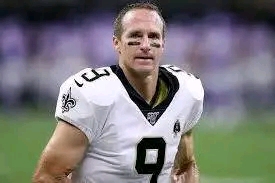
Shocking Empty Stands for Sydney McLaughlin-Levrone & Gabby Thomas as Calls Mount Against Grand Slam Track Events

In an era where track and field athletes like Sydney McLaughlin-Levrone and Gabby Thomas dominate headlines, it’s startling to witness the empty stands at major meets, especially when they are part of the Grand Slam track series. These events, typically designed to showcase the world’s most accomplished athletes, have recently seen a disturbing trend of dwindling fan attendance, despite the participation of stars like McLaughlin-Levrone and Thomas. As fans, commentators, and experts alike voice their concerns, there is growing pressure on the organizers to address the issue before it becomes a broader problem for the sport’s future.
**The Empty Stands Phenomenon**
At the heart of this growing issue is the stark contrast between the high-profile nature of these athletes and the largely vacant stadiums in which they perform. Sydney McLaughlin-Levrone, an Olympic gold medalist and world record holder, has become one of track and field’s brightest stars. Gabby Thomas, a two-time Olympic medalist, has similarly garnered attention for her exceptional sprinting prowess. Yet, despite their presence, the stands at some of the most anticipated Grand Slam track events in 2025 have remained shockingly empty.
This is not just a matter of low attendance in a few cases—it seems to be a recurring problem. The most recent events in major cities, such as New York and Los Angeles, have seen large sections of the stadium devoid of fans, even as McLaughlin-Levrone and Thomas took to the track. For athletes who are already global superstars, this is a particularly frustrating reality. The atmosphere that makes a live sporting event thrilling—the cheers of the crowd, the excitement in the air—has been lacking, leaving athletes and fans alike wondering why track and field appears to be struggling to fill its seats.
**The Grand Slam Format Under Scrutiny**
The decline in fan attendance has sparked serious questions about the structure and appeal of the Grand Slam track series. While tennis Grand Slams are synonymous with packed stadiums and the buzz of anticipation, track and field’s version of the “Grand Slam” has not quite achieved the same level of consistent success in drawing in fans. One major concern is the lack of excitement and accessibility to the broader public. In tennis, the Grand Slam events happen on well-established courts and are marketed as major yearly events. Meanwhile, track meets can sometimes feel more fragmented, with many events scattered around the world with little fanfare or cohesive branding.
The unpredictability of track events also presents a challenge for organizers. Unlike tennis, where fans can reliably look forward to seeing top players like Novak Djokovic or Serena Williams, track and field meets sometimes see athletes withdrawing due to injury or scheduling conflicts. This can lead to last-minute changes in the lineup, leaving fans disillusioned if their favorite athletes are no longer participating.
Moreover, many fans prefer to watch track events on TV or through online streams where they can skip the logistics and time-consuming process of attending in person. The emergence of streaming platforms has made it easier for viewers to watch their favorite athletes from the comfort of their homes. While this shift toward digital consumption is understandable, it doesn’t address the issue of empty stands at live events.
**The Role of Sponsors and Media Coverage**
Another key element in the ongoing struggle to fill seats is the lack of robust media coverage and sponsorship backing for track events. While Olympic Games and World Championships may receive substantial broadcasting and sponsorship deals, many of the Grand Slam events don’t have the same level of visibility. In comparison to football or basketball, which have long-term, established broadcasting agreements, track and field often falls to the wayside when it comes to media attention, particularly outside of major championships.
Without solid media coverage, many casual fans are unaware of when and where these events are taking place. This lack of visibility, paired with often inconsistent event promotion, means that even the presence of top athletes like McLaughlin-Levrone and Thomas might not be enough to draw in crowds.
Sponsors, too, have a role to play in supporting track and field events. The sponsorship deals in track and field are often scattered across individual athletes or isolated meets, unlike the larger, overarching deals seen in other sports. This fragmented approach results in lower budgets for marketing and promotions, which directly affects ticket sales and fan engagement.
**The Calls for Change**
The empty stands at Grand Slam track events have sparked an outcry from fans and athletes alike. Many are calling for changes to the format, hoping for a more unified, fan-friendly approach that will bring energy and excitement back to the sport. Some experts suggest that these events need to be more strategically placed within the athletic calendar to avoid clashes with other major sporting events, while others advocate for the creation of a cohesive, globally marketed series that mirrors the success of tennis’s Grand Slam events.
Athletes like McLaughlin-Levrone and Thomas deserve an environment where their incredible talents can be celebrated by the crowds. As track and field continues to grow, finding ways to fill those empty stands will be key to securing the sport’s future and ensuring that the next generation of athletes can thrive both on the track and in
front of enthusiastic fans.





